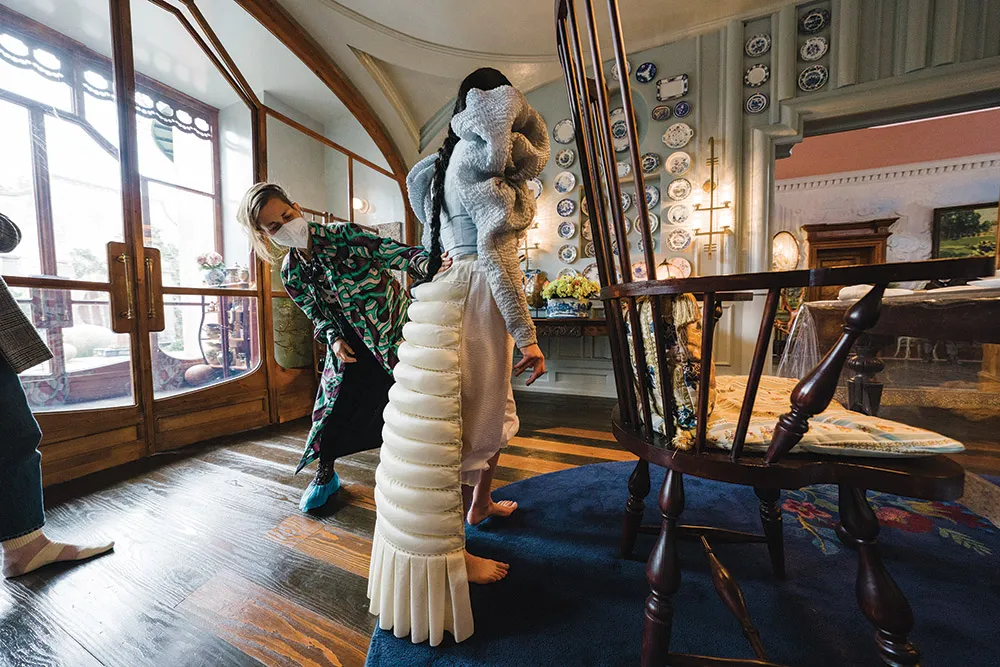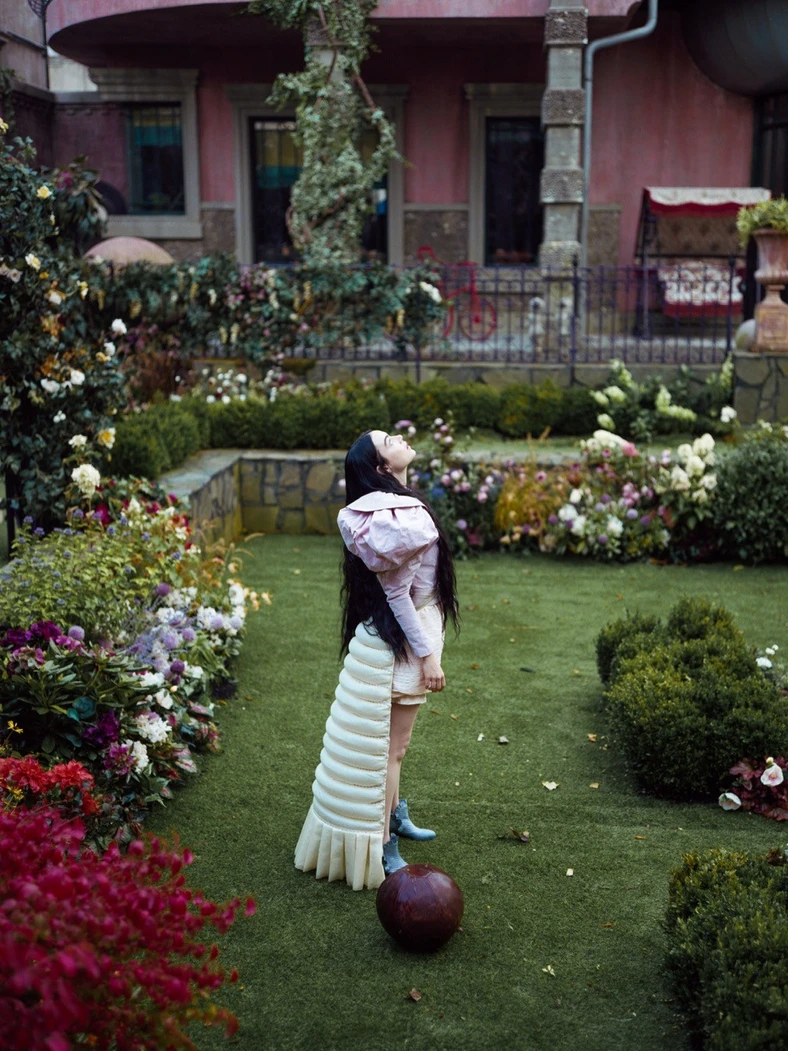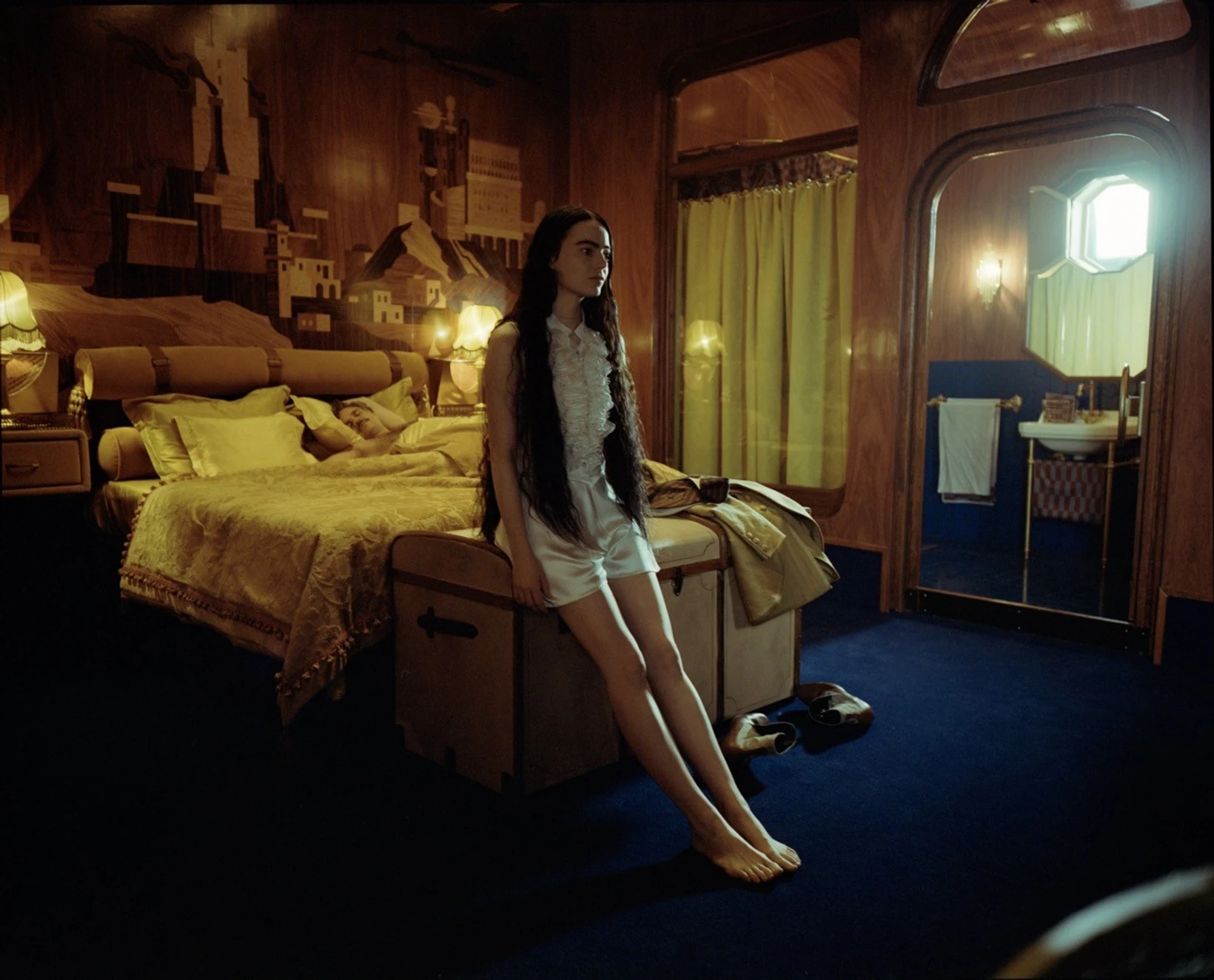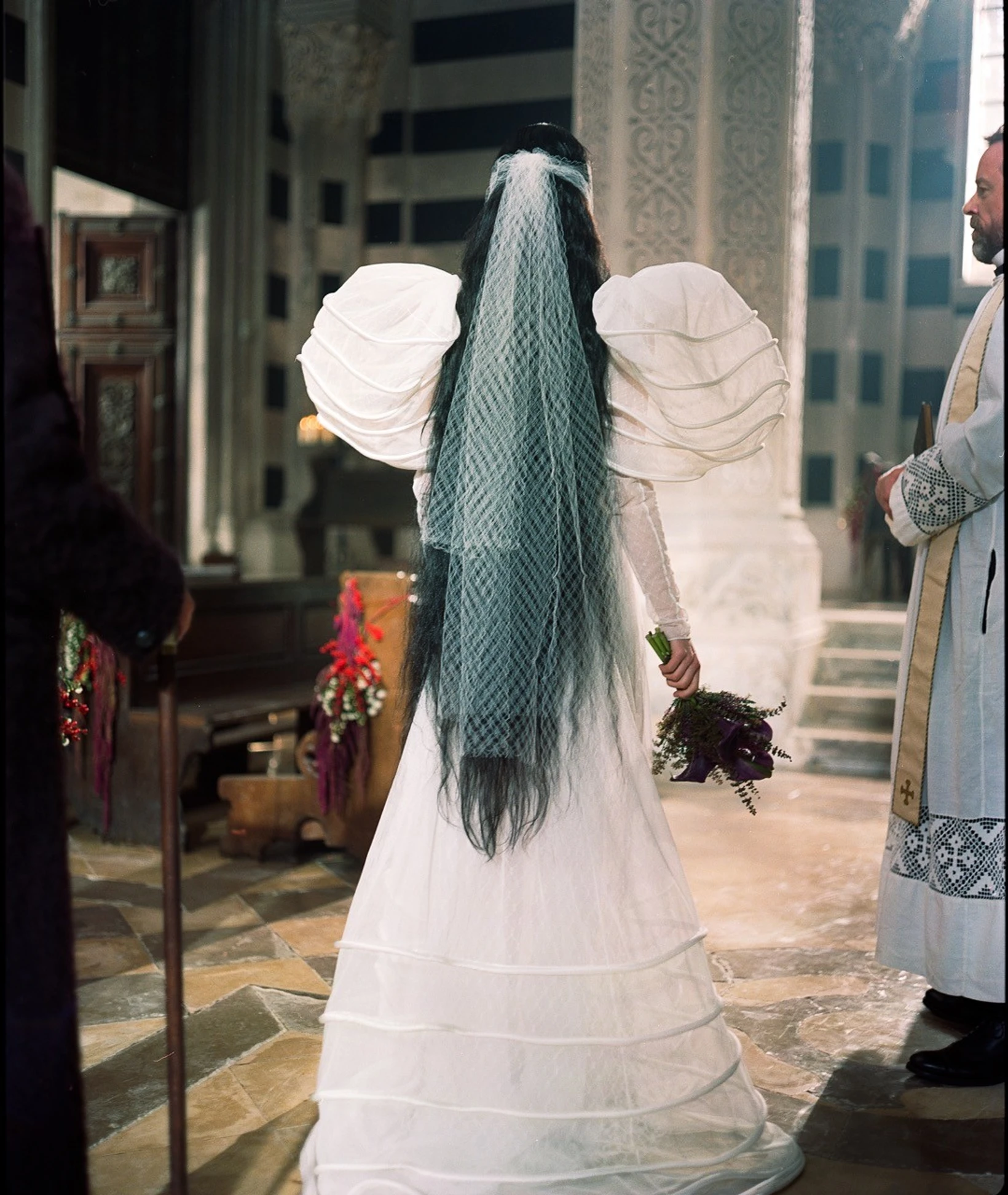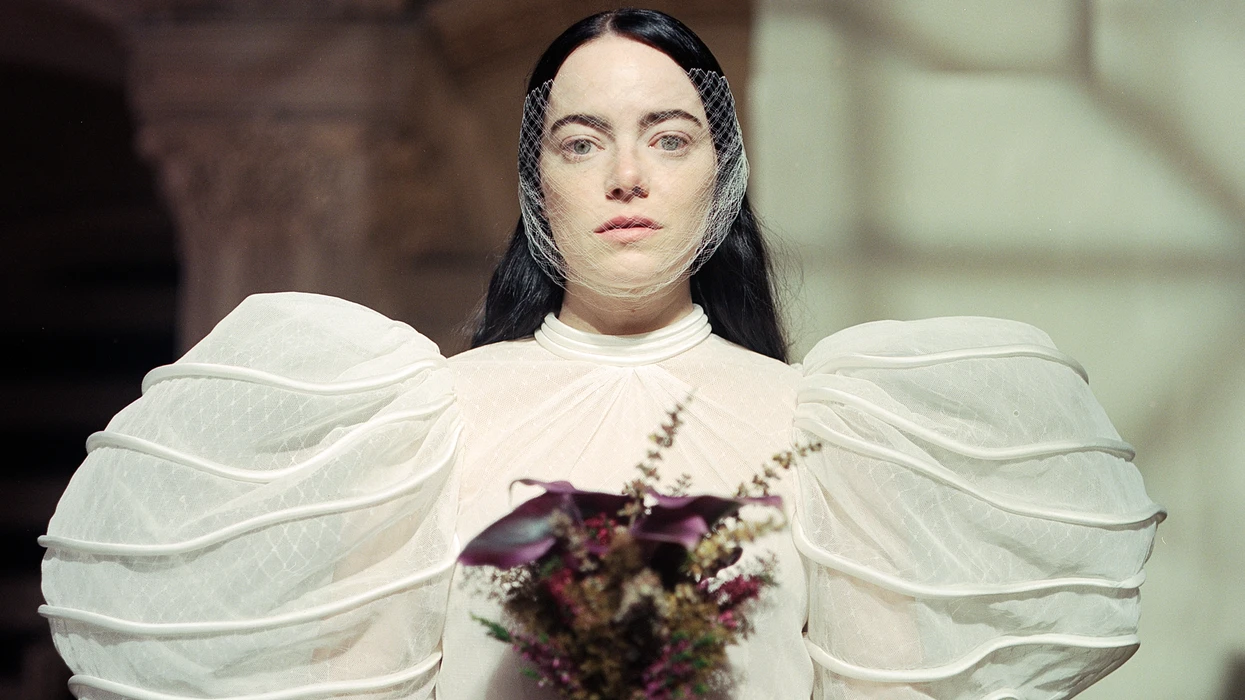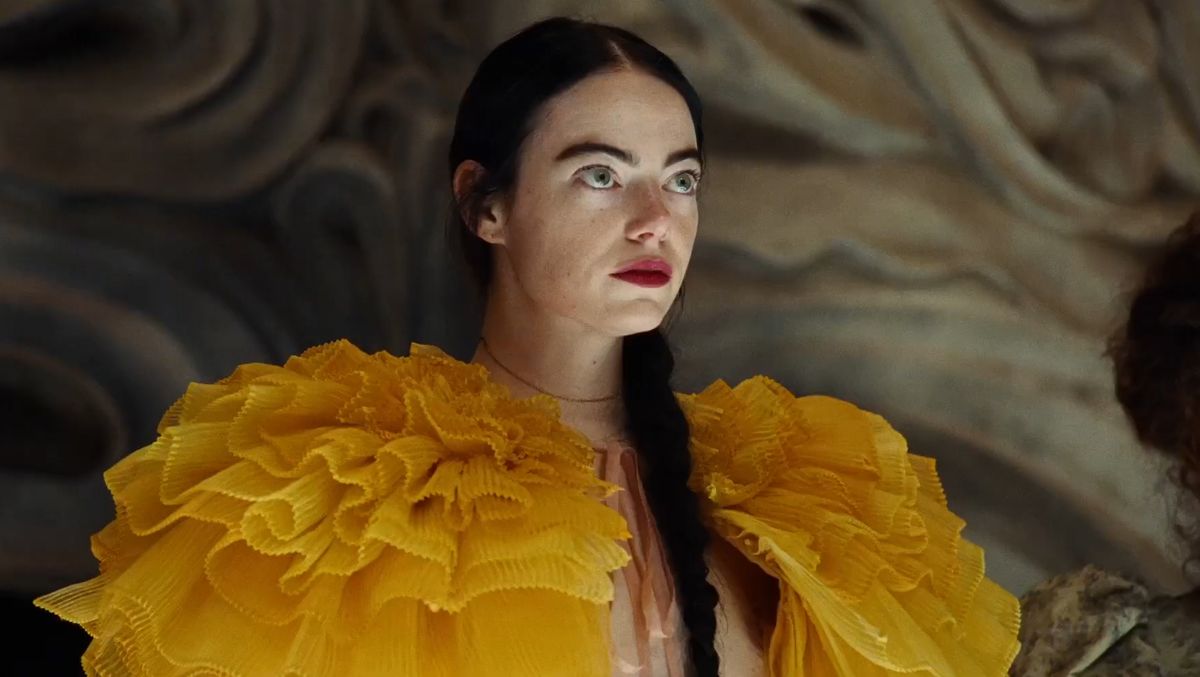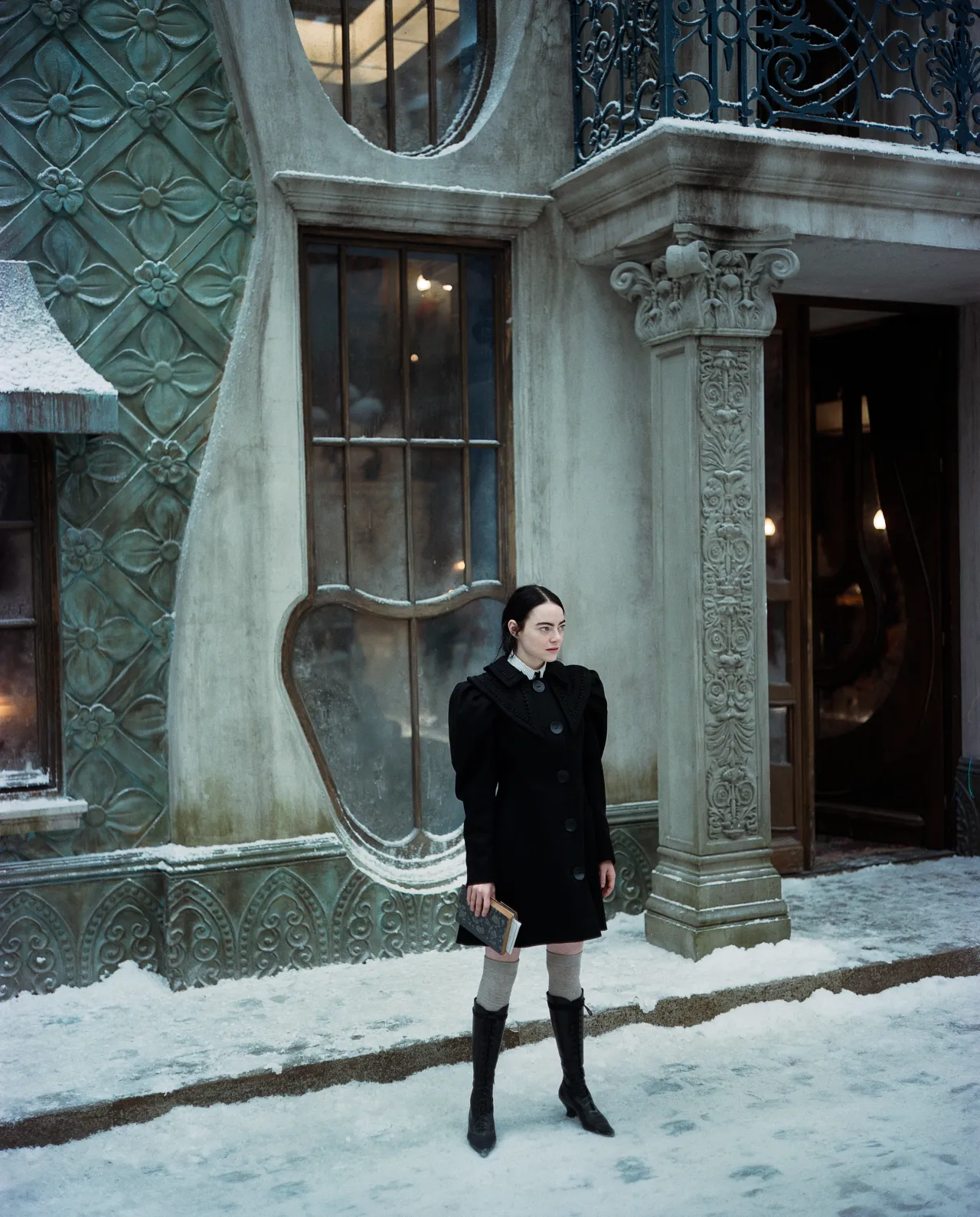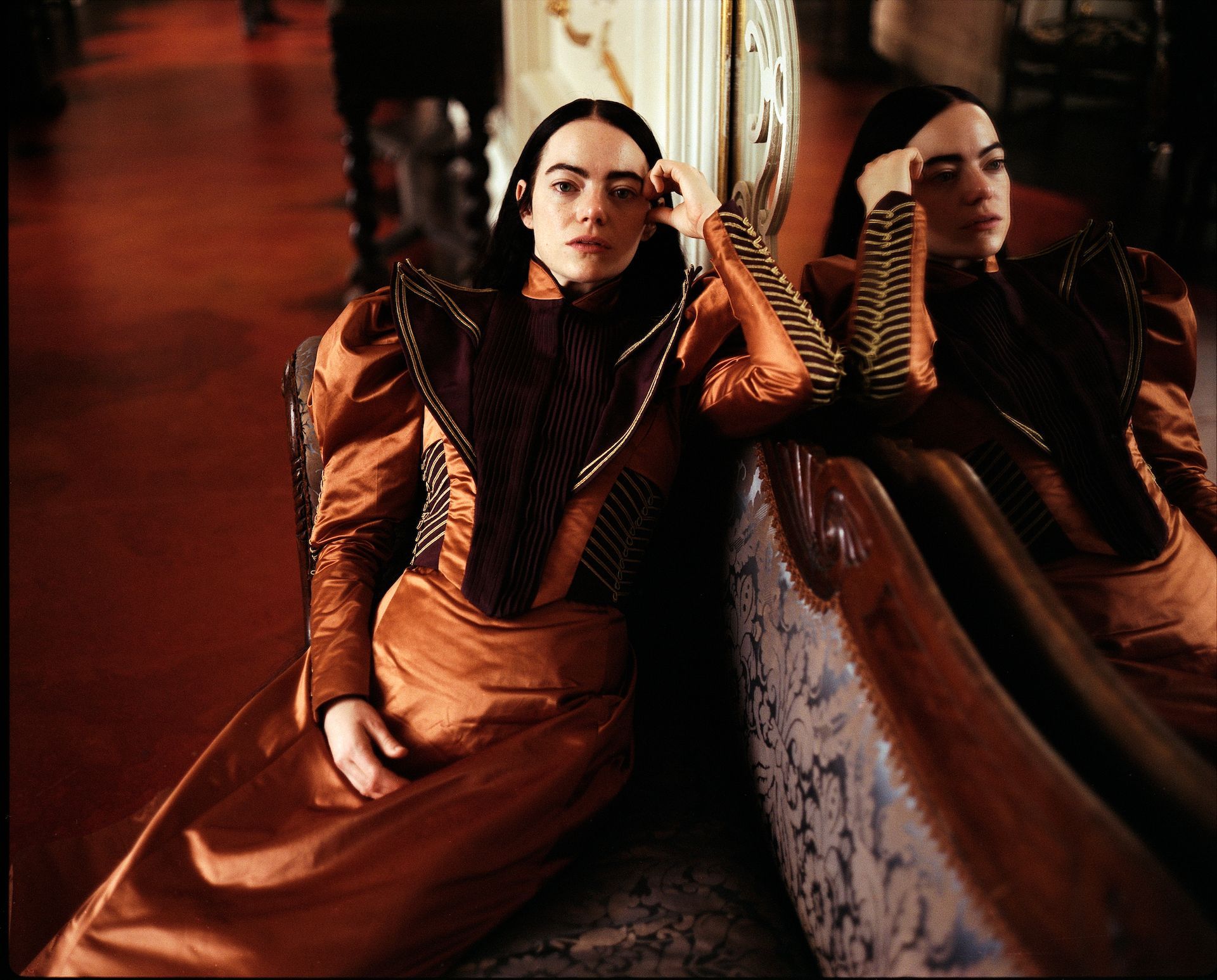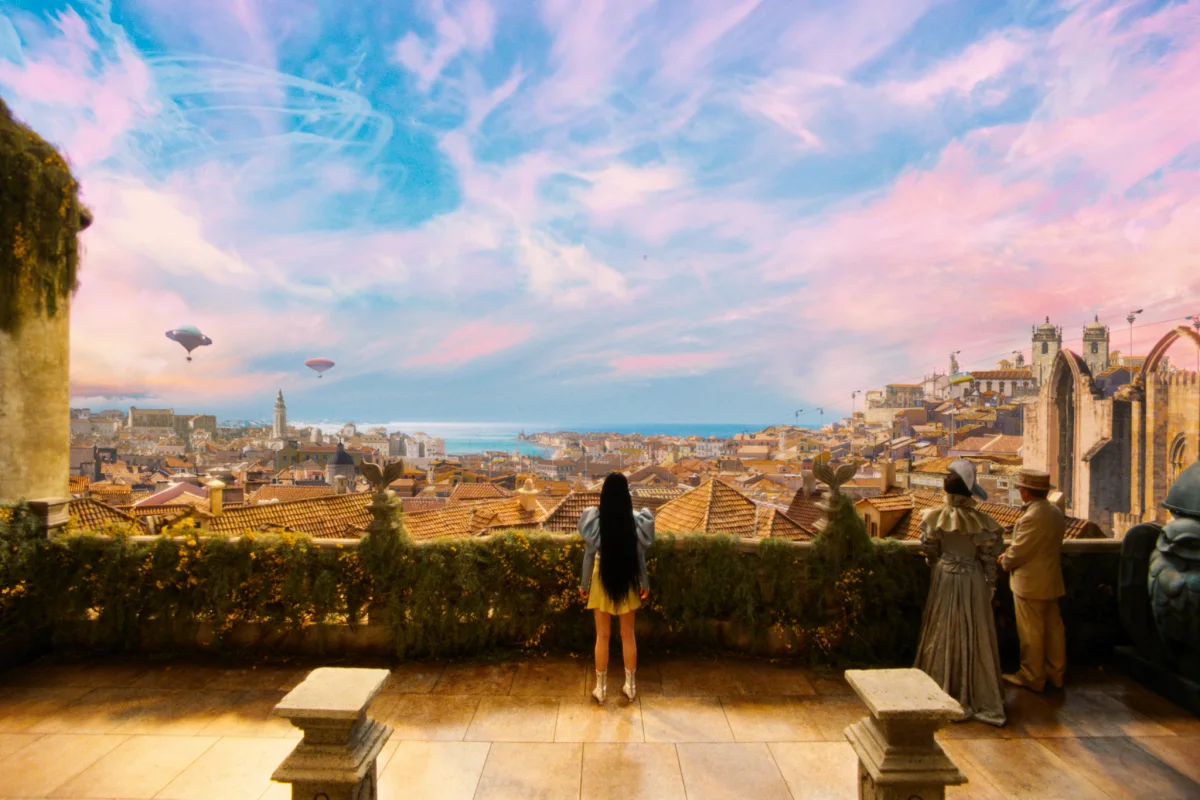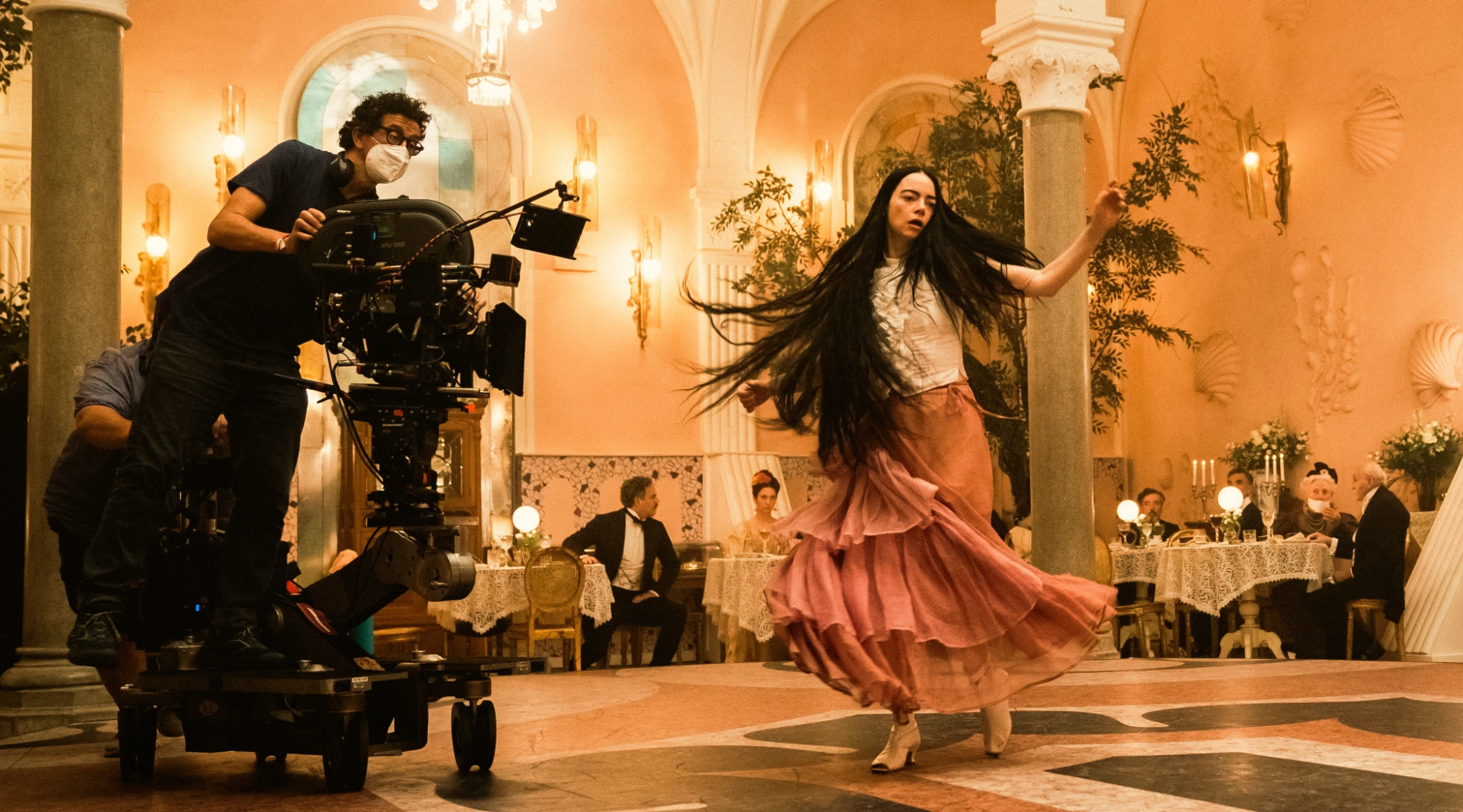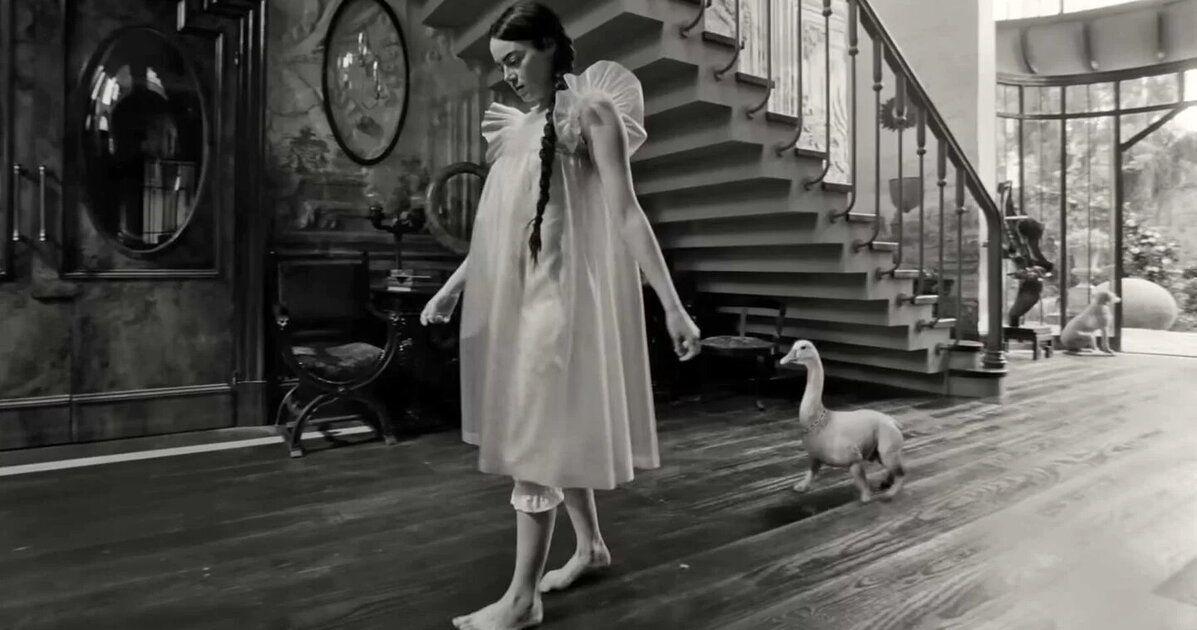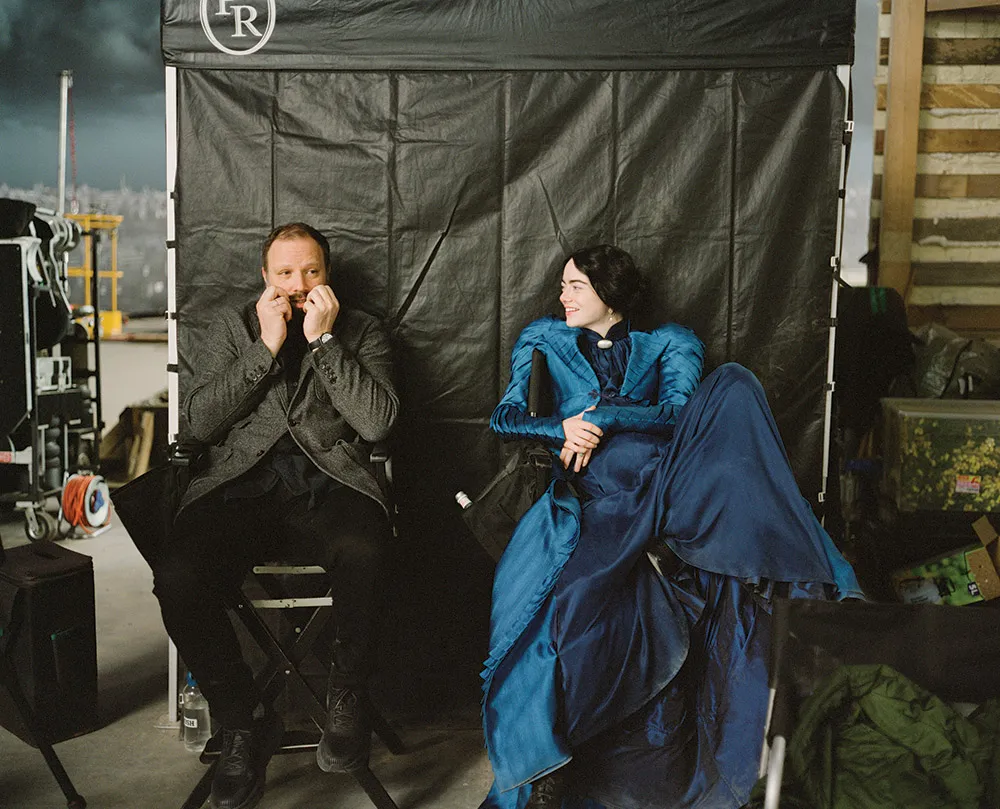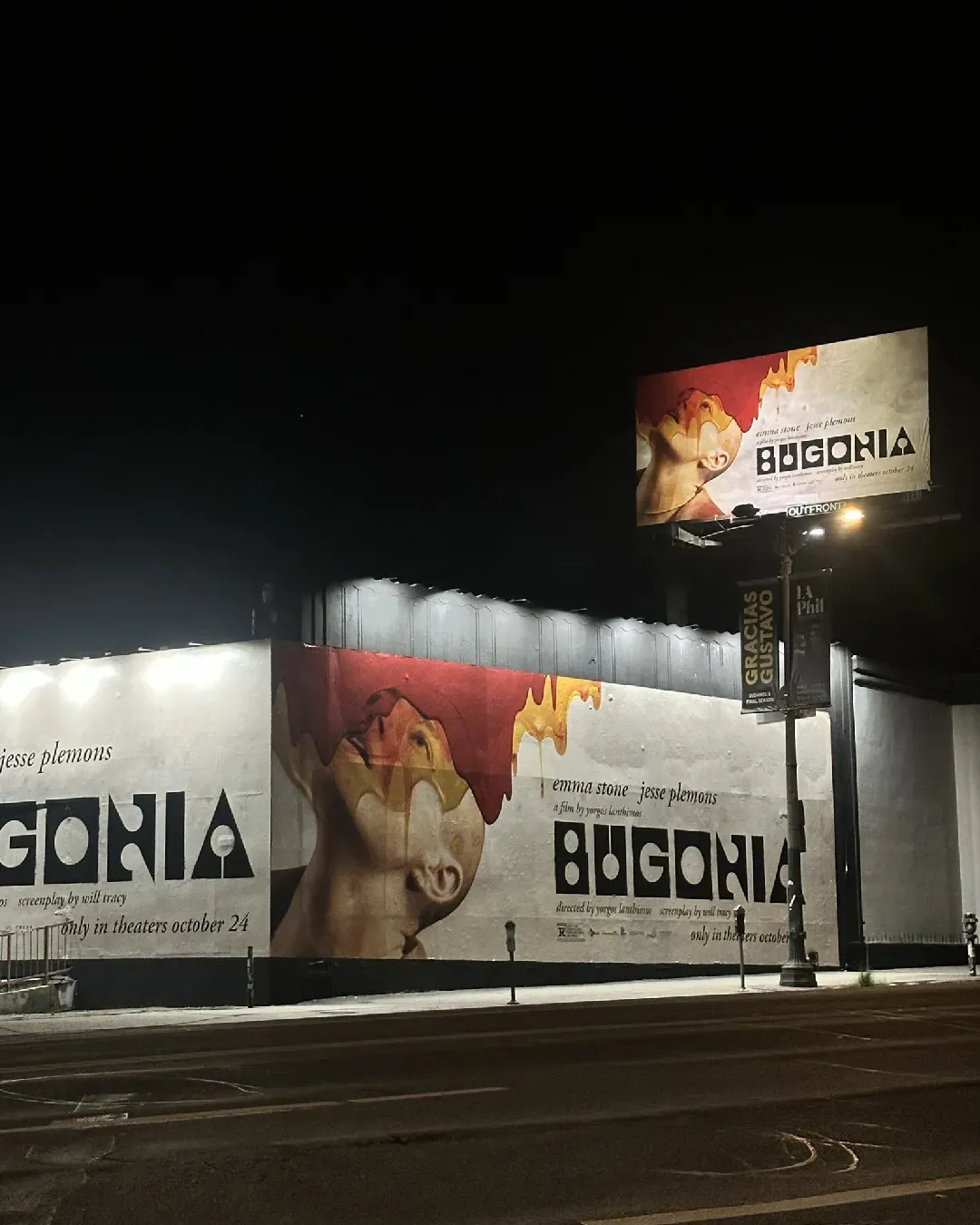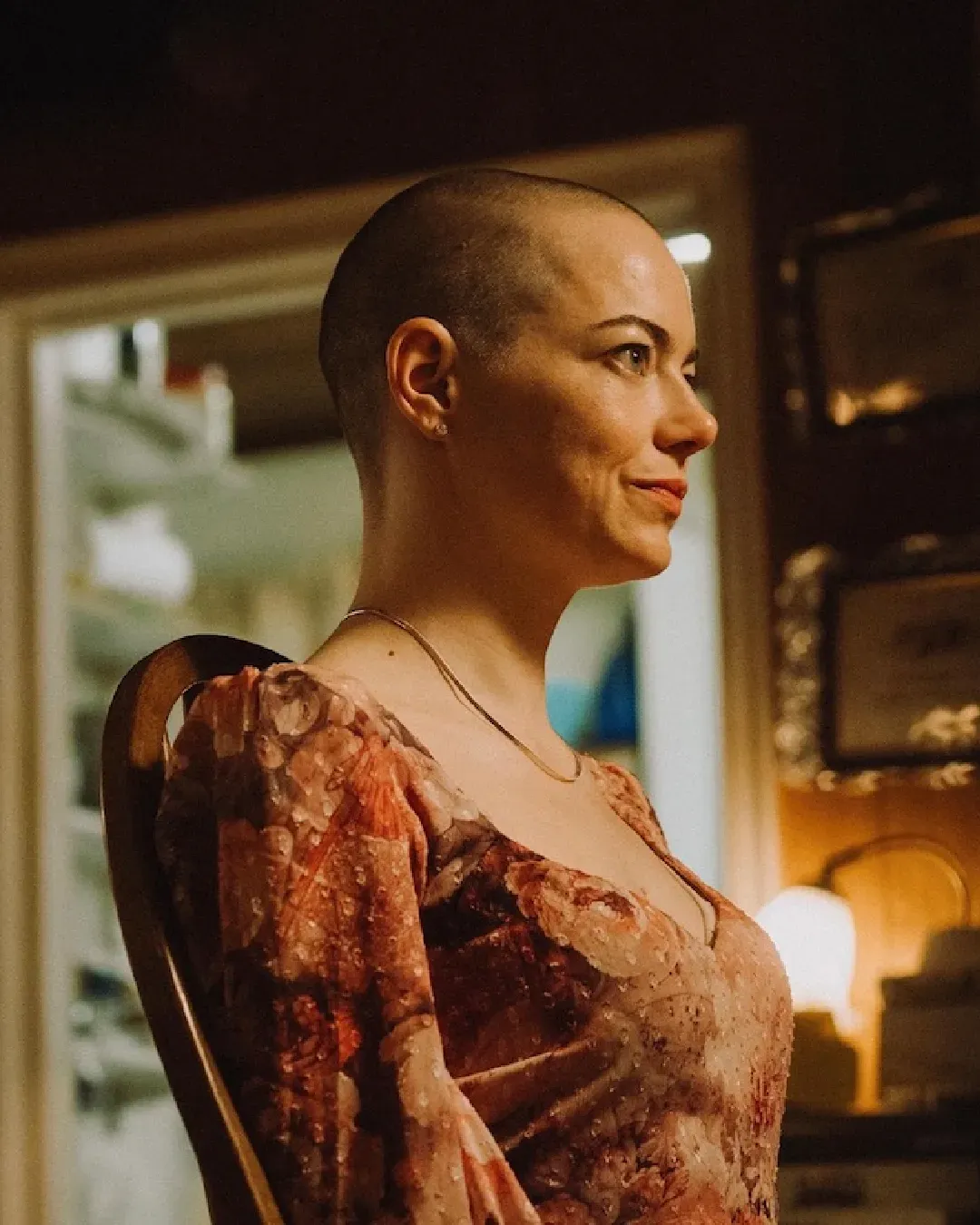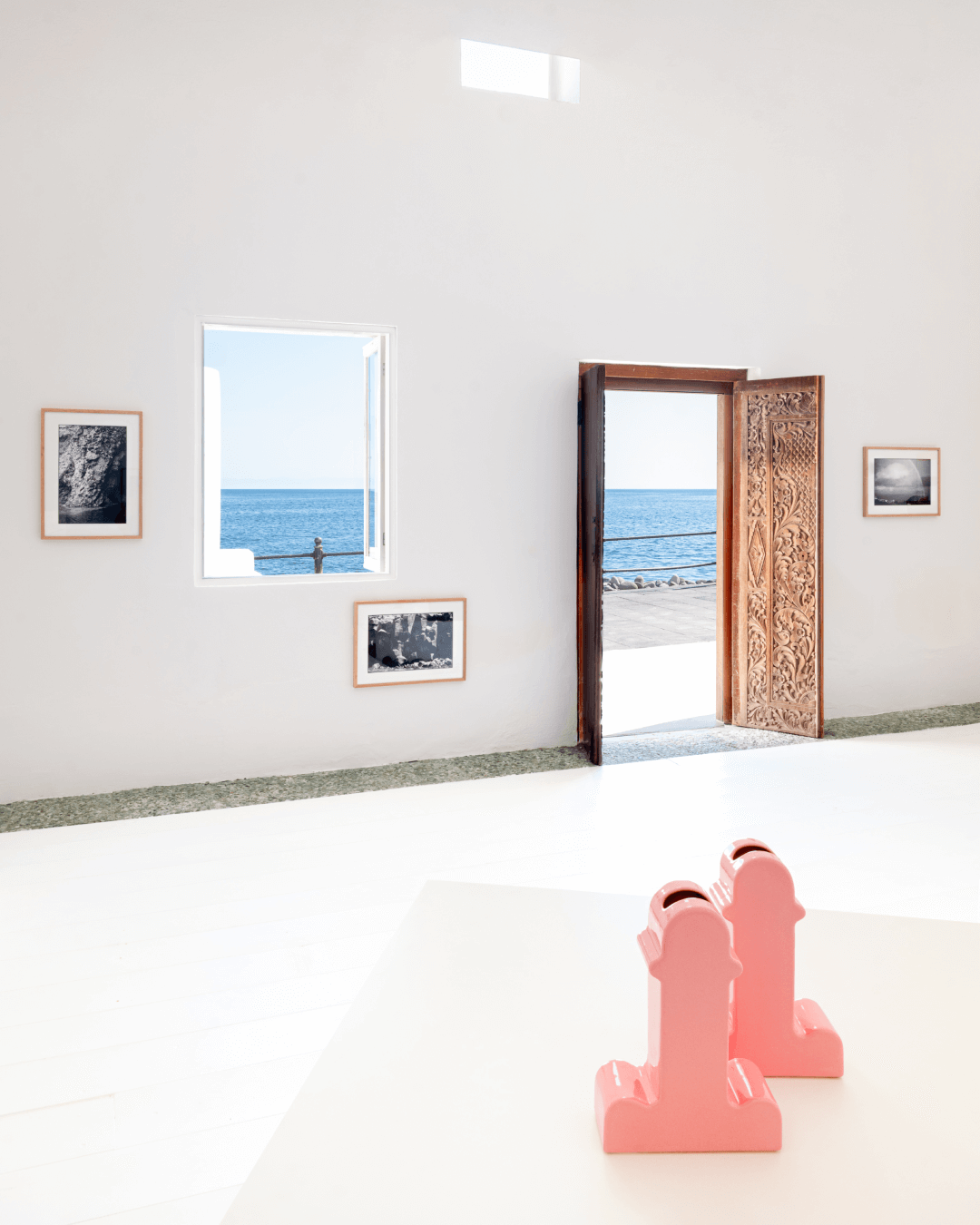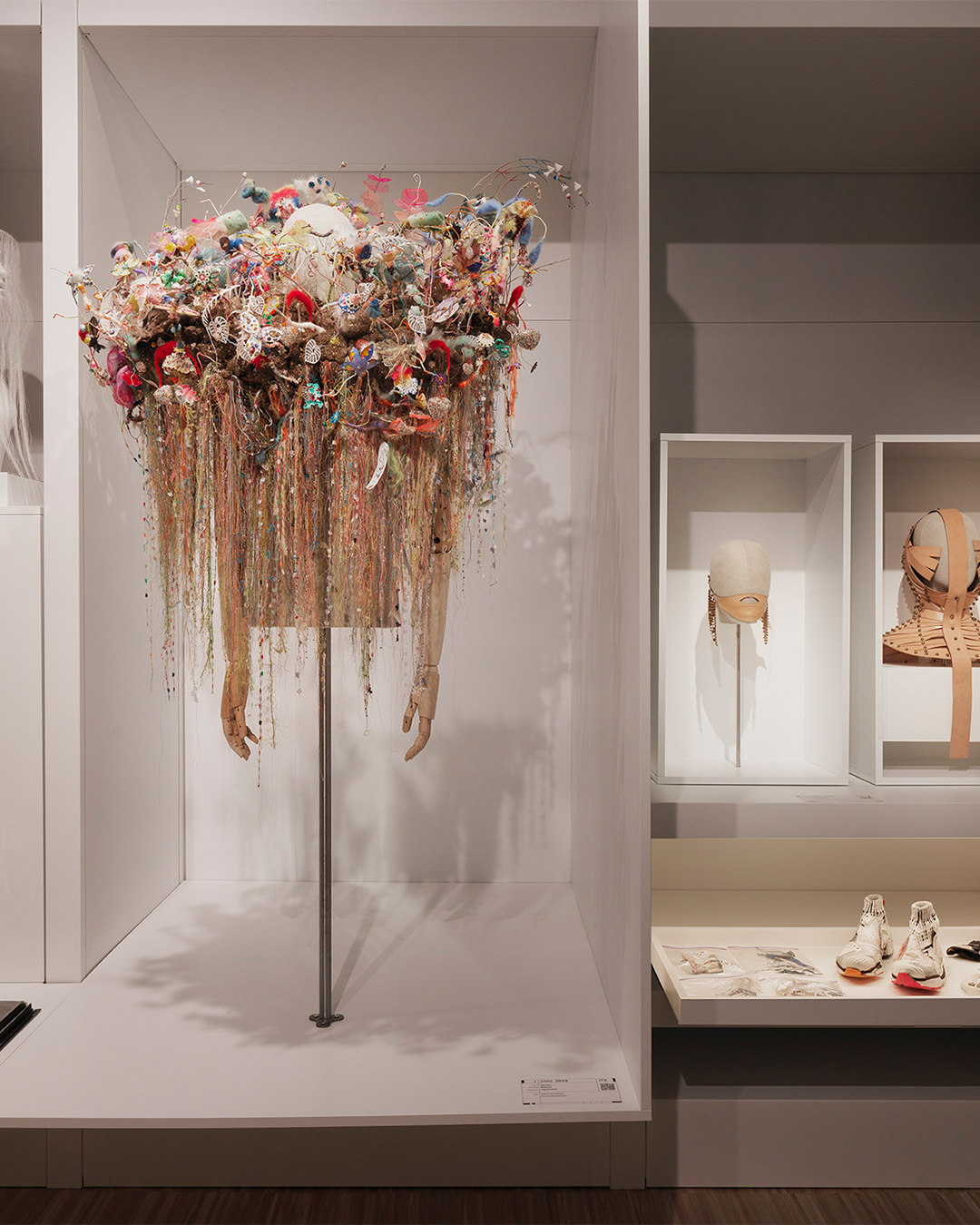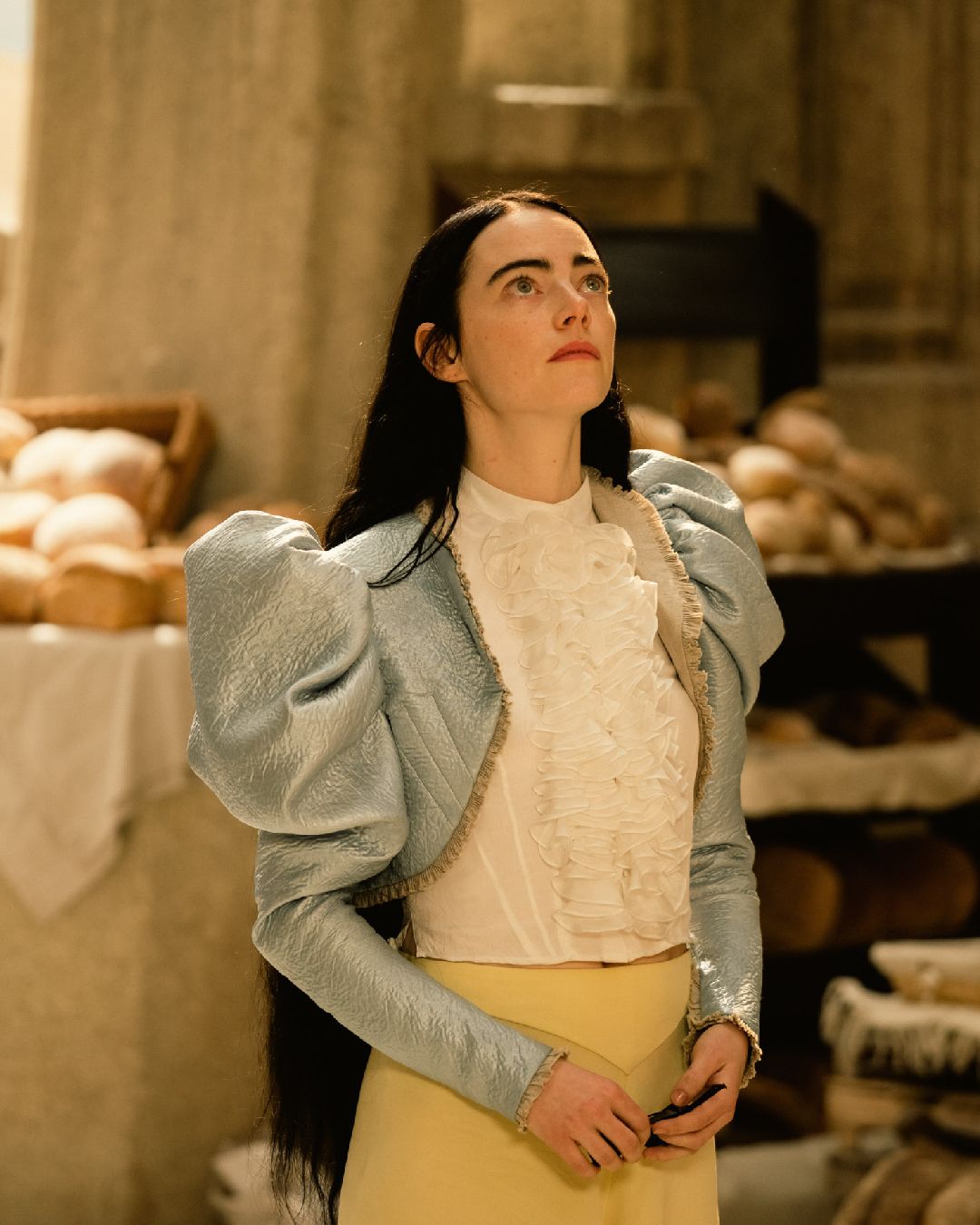
Liberation through clothing in Poor Things! When a dress tells a story
In Poor Things!, costume designer Holly Waddington demonstrated how a costume can contribute to the immediacy of a story. A designer who has already left her mark on successful period films and series such as The Great and Lady Macbeth, in the new film by Yorgos Lanthimos, she translated the narrative arc of the protagonist into colors and silhouettes using Victorian stylistic codes, without strictly adhering to chronological threads. Inspired by Egon Schiele's art that influenced her hair to the futuristic designs of Courréges, the image of Bella Baxter (Emma Stone) is divided into different acts, retracing each of her most impactful changes.
Poor Things! is a comedic sci-fi film set in the late 1800s, echoing themes of Frankestein alongside the sexual and political liberation of women. At the center of the "fairy tale" is the life of a woman who, after attempting suicide, is brought back to life by a quirky Dr. Godwin Baxter (Willem Dafoe), who replaces her brain with that of the child she had in her womb. As this brief description suggests, in the early pages, the audience sees Bella for what she is: an infant. Wrapped in nightgowns and white baby doll dresses, she runs through the rooms of the house where she grows up in London, and then a bustle cage worn like a mermaid's tail captures the playful side of the time's silhouettes. She often has bare legs, bare feet, and long loose or braided hair. Initially in black and white, the audience discovers color only when the protagonist arrives in Lisbon, where she discovers freedom and sex, initiating a succession of bright colors. Without the governess reminding her what clothes to wear, Bella leaves the hotel in canary yellow shorts and a white frilly blouse to explore the city. As Waddington recounts in an interview, the ankle-length white boots she wears in these scenes draw inspiration from the space-age aesthetic brought to prominence by Courrèges in the '60s, while the top and shorts were commonly known as "modesty pieces" in the Victorian era, articles of clothing added to the rest of the outfit to cover exposed skin - at the time, even revealing an ankle was considered provocative. Bella's Portuguese looks reflect her youth, a period of self-exploration that clashes with early social impositions. Lover Duncan Wedderburn begins to lament her spirit of independence and lack of "good manners," and so at the restaurant, for the first time dining with new people, Bella appears dressed in the brightest yellow of the entire film, in a dress with two large bows on the back that completely overshadows her.
On the ship to Greece, Bella's wardrobe and story undergo a significant emotional turn; the moment she confronts reality, poverty in the world, and injustices, the white clothes of her childhood return, although this time they take the form of a well-bred woman's ensemble. Lying on her bed, with a bewildered look, we find her once again wrapped in a glimmer of innocence, until the support of an older woman and her friend introduce her to books, philosophy, and critical thinking. At this moment, the audience witnesses a decisive change in her character, the transformation from a young girl, a victim of life's challenges and a man who wants her for himself, to a formed and educated woman. The clothes change with her, growing and maturing in step, even though in Paris, as we will see, she spends almost as much time naked as dressed. With her arrival in the French capital and the break from Wedderburn, Bella decides to start working in a brothel. A tribute to the female body, its colors, and its forms, in scenes depicting Bella's career as a prostitute, her clothes are dyed pastel colors, light pink, and transparent. Creating an anachronistic clash between fabric and form through the addition of latex, for the creation of the yellow raincoat, Waddington looked to the Victorian-era condoms, a detail that adds a touch of irony to a turning point in the film's plot.
The looks worn by Emma Stone as Bella never take the rules of Victorian costume seriously. Even the uniform she wears to meetings with socialist groups and medical school, a dark coat with balloon sleeves over black boots with a chunky heel, leaves her legs exposed. The only time we see her in what could be considered traditional attire is when she is still Victoria, on the brink of the precipice leading to her death, and in the house of her ex-husband, when she is briefly kidnapped. From the beginning to the end of the film, the costumes by designer Waddington follow the emotional and cognitive twists of Bella, drawing inspiration from both the set's colors and the tenacity and intelligence of the protagonist. The costume designer's designs brought an energetic storytelling element to the stage, playing an active role in Lanthimos's narrative. In Poor Things!, the clothes communicate to the audience as much as the script, further proving that, in life and on screen, women's liberation involves the mind as much as the body.










































